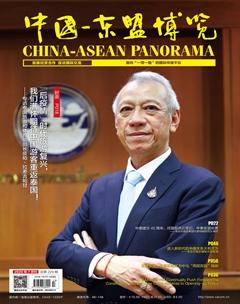企业用行动投票,中国(广西)自贸试验区钦州港片区营商环境获点赞!
许俊豪

新設立企业2482家,含新设外资企业30家,这是中国(广西)自贸试验区钦州港片区(以下简称钦州港片区)揭牌启动9个月在招商引资方面取得的成绩。
“欢迎广大企业家多到钦州港片区考察投资,钦州港片区将为企业发展营造一流营商环境,快速推动项目落户、建设、投产,实现互利共赢。”钦州市委常委、广西自贸试验区钦州港片区管委常务副主任王雄昌在近期的一场中国(广西)自贸试验区招商活动中这样说道。营商环境对吸引企业有着直接的联系,钦州港片区入驻企业数量不断增多,很大程度上要归功于其营商环境的优化。
服务“做加法”
提升企业服务能力是钦州港片区优化营商环境的重要着力点。钦州港片区的服务从企业注册环节就已经开始。目前,为了在抓好疫情防控的前提下面向全球招商,钦州港片区主要是通过不见面注册的方式,为企业提供便利的注册服务。
对落户到钦州港片区的企业,钦州港片区组建了产业服务中心,为企业提供全生命周期的运营服务。“从商事登记、工程选址到生产经营等环节,企业遇到任何问题,都可以向钦州港片区产业服务中心寻求帮助。”钦州港片区产业服务中心负责人邓雪介绍道,在涉及工商登记、税务、社保等方面的事项,相关部门还通过QQ群等方式,随时解答企业的疑惑,及时帮助解决企业提出的难题。
例如,6月4日,广西金桂浆纸业有限公司30万吨双氧水项目最大反应器需从钦州港码头运进厂区,由于双氧水反应器为超大型设备,从码头运抵企业施工现场需要通过铁路匝口等多层路障,困难重重。接到企业求助信息后,钦州港片区产业服务中心高度重视,急企业之所急,积极协调海关、港口管理等相关部门,通力合作,最终帮助企业完成了运输任务,为此项目在7月底完成设备安装打下坚实的基础。
此外,钦州港片区还积极争取税务系统支持,创新税收管理服务机制,推进办税便利化改革,优化新办企业、平台经济发票申领,缩短了办税时间。国家税务总局广西钦州保税港区税务局局长周文军介绍,自钦州港片区揭牌以来,钦州保税港区税务局不断优化涉税服务举措,进一步推进窗口定点服务、网络全天服务、骨干团队上门服务、紧急情况延时服务,为新设企业赠送税收政策服务大礼包等,切实优化税收营商环境。
审批“做减法”
为突出钦州港片区的独特优势,加快向海经济发展建设,推动中国—东盟的开放合作,钦州港片区在广西自贸试验区高质量发展支持政策的基础上,主动对标先进,出台了钦州港片区高质量发展补充政策,以及《中国(广西)自由贸易试验区钦州港片区“告知承诺制审批”暂行办法》等措施。
在一系列政策的指导下,钦州港片区组建了钦州港片区行政审批局,将原来分散的商事登记、工程报建、社会事务等涉及政务服务业务窗口整合到钦州港片区综合服务大厅,推进政务服务“一体化”建设。同时,钦州港片区还率先实行“极简审批”“告知承诺制审批”改革,用一张“承诺书”替代缺少的申请材料,促进审批服务“零等待”。
6月12日,记者在钦州港片区综合服务大厅看到,负责交通运输项目审批的工作人员黎如战,请示局领导后,快速地为一家物流企业进行登记、审批,前后时间不到1小时。“钦州港片区揭牌启动以来,运输车辆登记明显增加,反映出钦州港片区物流发展的良好态势。我们将继续为企业入驻钦州港片区、快速取得生产经营资质服务。”黎如战说道。
企业如何评价?
尽管钦州港片区在优化营商环境上下了不少功夫,但是其营商环境究竟如何,企业的评价最有说服力。
近期在钦州港片区筹办新公司的一位物流企业负责人告诉记者,钦州港片区办事效率很高,工商、税务、交通等相关机构都积极帮企业取得生产经营资质并解决相关问题。“就算系统崩溃了也会主动帮我们解决,非常感谢钦州港片区的用心。”
6月11日,中谷海运集团与钦州港片区签署战略合作与项目投资协议,双方将在钦州港共同加快建设中谷钦州集装箱多式联运物流基地。类似的更多企业,已经像中谷海运一样,用行动为钦州港片区的营商环境点赞和投票。
The conclusion of text-based negotiations for the Regional Comprehensive Economic Partnership (RCEP) in November 2019 paves the way for the economies of the Association of Southeast Asian Nations (ASEAN) to strengthen their economic integration with five of its dialogue partners, namely, Australia, the Peoples Republic of China, the Republic of Korea, Japan, and New Zealand. The economic integration of ASEAN into its dialogue partners is a major milestone in the realisation of the ASEAN Economic Community (AEC) that aims to integrate ASEAN into the global economy.
In this article, I argue that small changes in trade policy instruments under RCEP are likely to have significant impacts on trade flows in ASEAN. Below, I explain three key drivers in RCEP that can lead to the growth of ASEANs trade in goods. These key drivers include the comprehensive coverage of RCEP, the large market size, and the strong economic linkage via trade and investment.
First, RCEP covers comprehensive trade and non-trade issues that can enhance further liberalisation of trade and investment in ASEAN. It consists of 20 chapters, which extends the ambition of ASEAN beyond the limits of trade and trade policy, including non-trade issues. Some of these, such as rules of origin, technical barriers to trade, trade in services, electronic commerce and intellectual property, have been included in the AEC Blueprint 2025, but the RCEP is more likely to further in these directions than those of the AEC. In fact, ASEAN countries are implementing the Guideline of Non-tariff Measures to eliminate non-tariff barriers, but they have not yet made much progress in doing so.
Taken together, commitments made under the RCEP will benefit consumers and businesses in ASEAN by reducing unnecessary costs that can often be imposed on them by both, border and “behind the border” trade restrictions, enhancing businesses to utilise preferential tariffs with a common rule of origin, and stimulating innovation with stronger protection of intellectual property rights.
Second, RCEP offers opportunities in the form of a huge market of US$ 24.8 trillion and over 2.3 billion people. In 2018, the combined gross domestic product (GDP) of RCEP (on a purchasing power parity basis) is greater than that of other trading blocs such as the European Union (EU) and North American Free Trade Agreement (NAFTA). In Asia, the combined GDP of RCEP is about five times that of the members of the ASEAN Free Trade Area (AFTA), and about three times that of other Asian countries.
Third, ASEAN and its dialogue partners have a strong economic relationship through trade and investment. In 2018, ASEANs total trade in goods — i.e. imports plus exports — stood at US$ 2.8 trillion, 34% of which was accounted for by the bilateral trade between ASEAN and five of its dialogue partners and 23% was accounted for by intra-ASEAN trade. Moreover, total inflows of foreign direct investment in ASEAN recorded at US$ 152.8 billion in 2018 — 25% of which was sourced from its dialogue partners and 15% was sourced from ASEAN countries. Taken together, values of intra-RCEP trade and investment already account for 57% of total trade and 40% of total FDI inflows in ASEAN, respectively.
The large market size of RCEP coupled with strong trade and investment linkages between ASEAN and its dialogue partners suggest that any small reduction in trade barriers is likely to increase significant gains from trade. These gains will then translate into a greater number of job creations, and hence resulting in an increase in GDP and reducing poverty in ASEAN emerging economies such as Cambodia, Lao PDR and Myanmar.
To realise economic gains from RCEP, policymakers should ensure that trade provisions in RCEP are deeper than those in existing ASEAN Free Trade Agreements (FTAs), namely AFTA and ASEAN+1 FTAs such as ASEAN-Australia and New Zealand FTA, ASEAN-Japan Comprehensive Economic Partnership, ASEAN-Peoples Republic of China Comprehensive Economic Cooperation Agreement, and ASEAN-Republic of Korea Comprehensive Economic Cooperation Agreement. For the case of AFTA, member countries identified sensitive sectors in which they do not fully eliminate tariffs, especially for rice. The more trade is covered by the sensitive sectors, the smaller are the economic benefits from tariff elimination under the FTA.
Although the full text of RCEP has not yet been publicly released, there are three reasons to believe that RCEP should be deeper than the existing ASEAN FTAs. First, RCEP should emerge as a region-wide regional agreement to consolidate the existing ASEAN FTAs and hence reducing the negative impact of complicated rules of origin on trade flows. Second, the threshold of tariff reductions in RCEP should be set more comparable to another regional FTA such as the Comprehensive and Progressive Agreement for Trans-Pacific Partnership (CPTPP), which aims for 99% tariff elimination. Third, the RCEP will also be an FTA, and it seems likely that the reductions of tariff, non-tariff barriers, and barriers to trade in services among RCEP countries will be more complete and more general than those of AFTA and the existing ASEAN+1 FTAs. The RCEP will also exempt some sensitive sectors for trade and investment liberalisation, but which sectors and how many of these sensitive sectors remain to be seen when the agreement is signed in late 2020.
· Source: ASEAN Post

